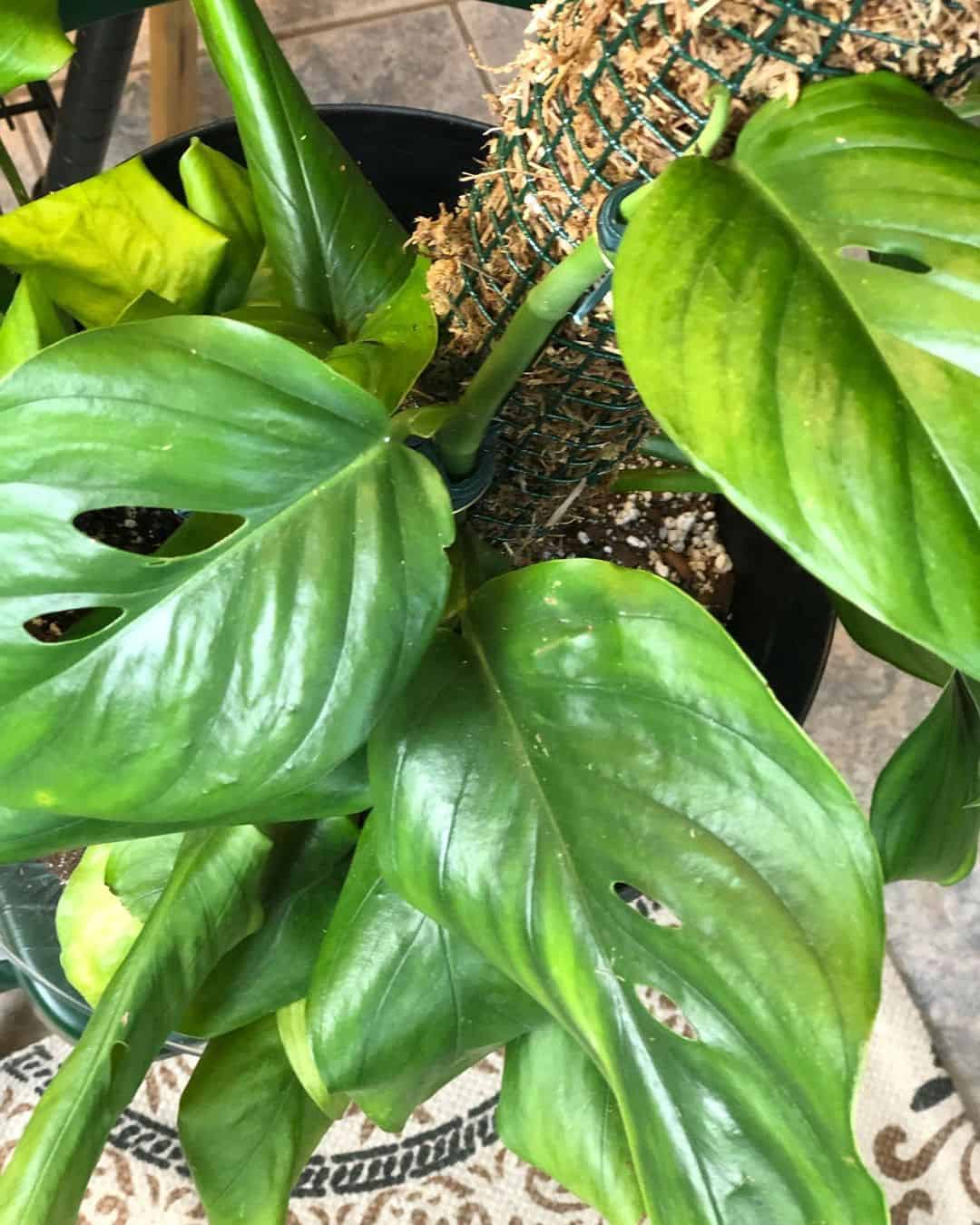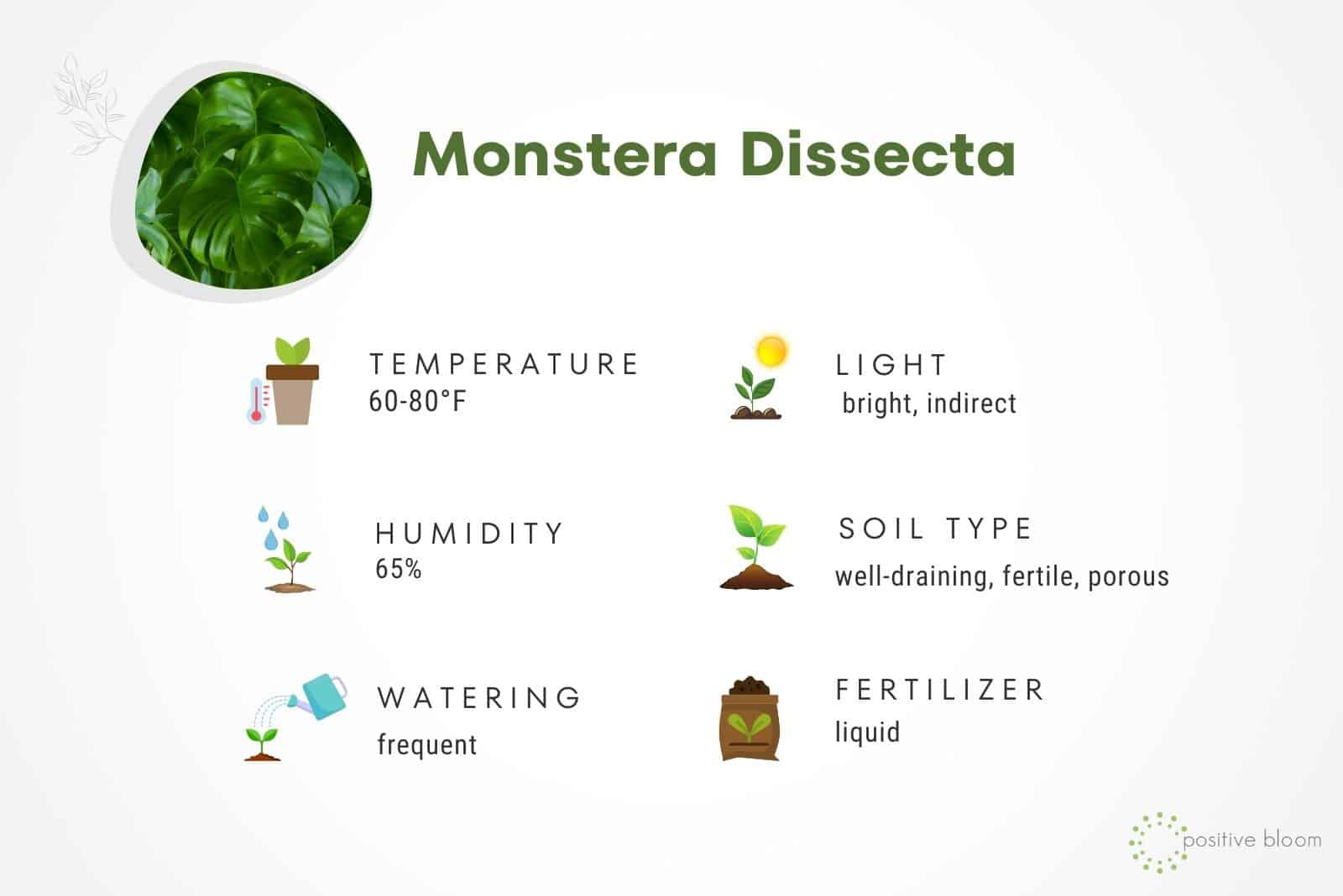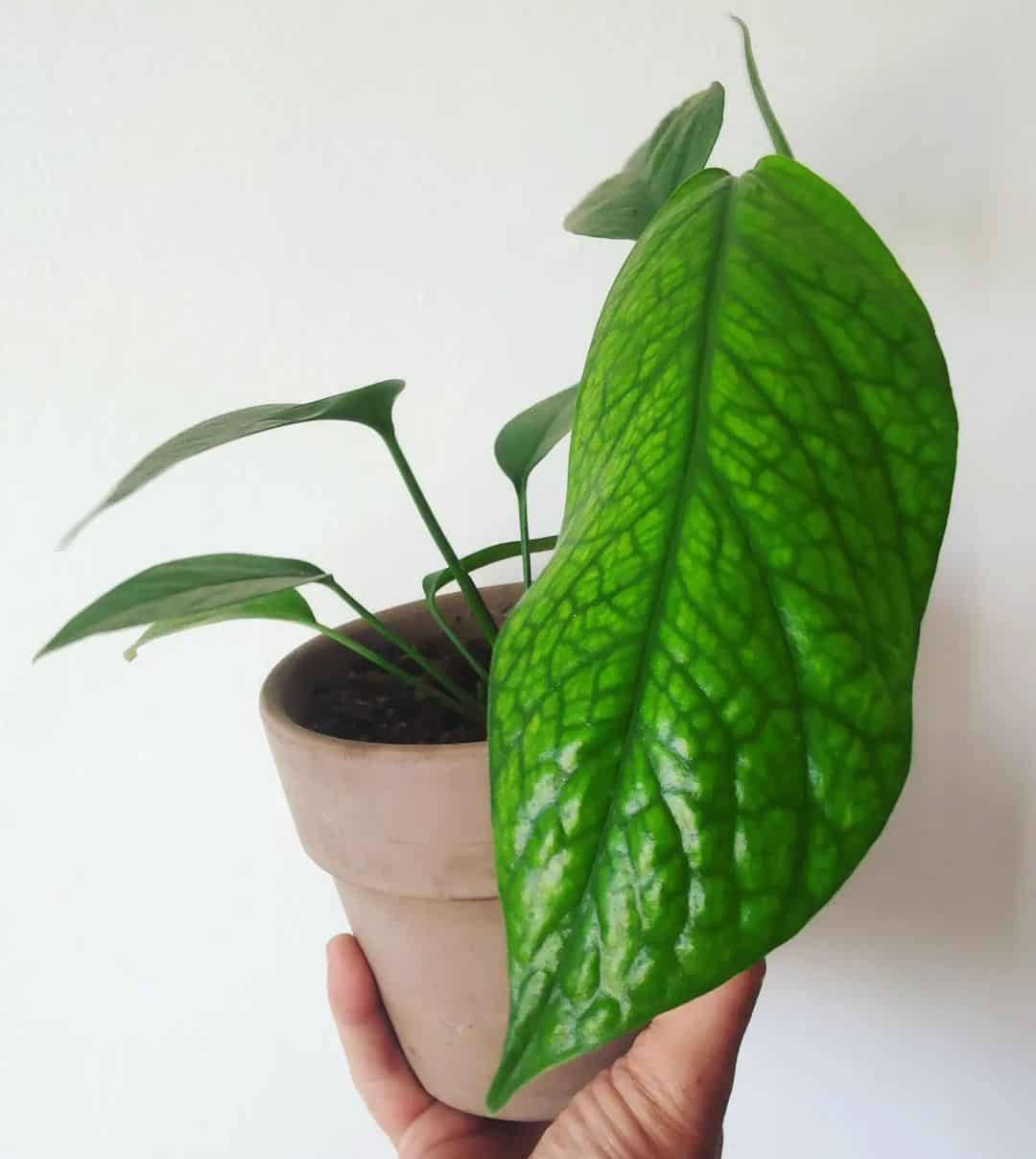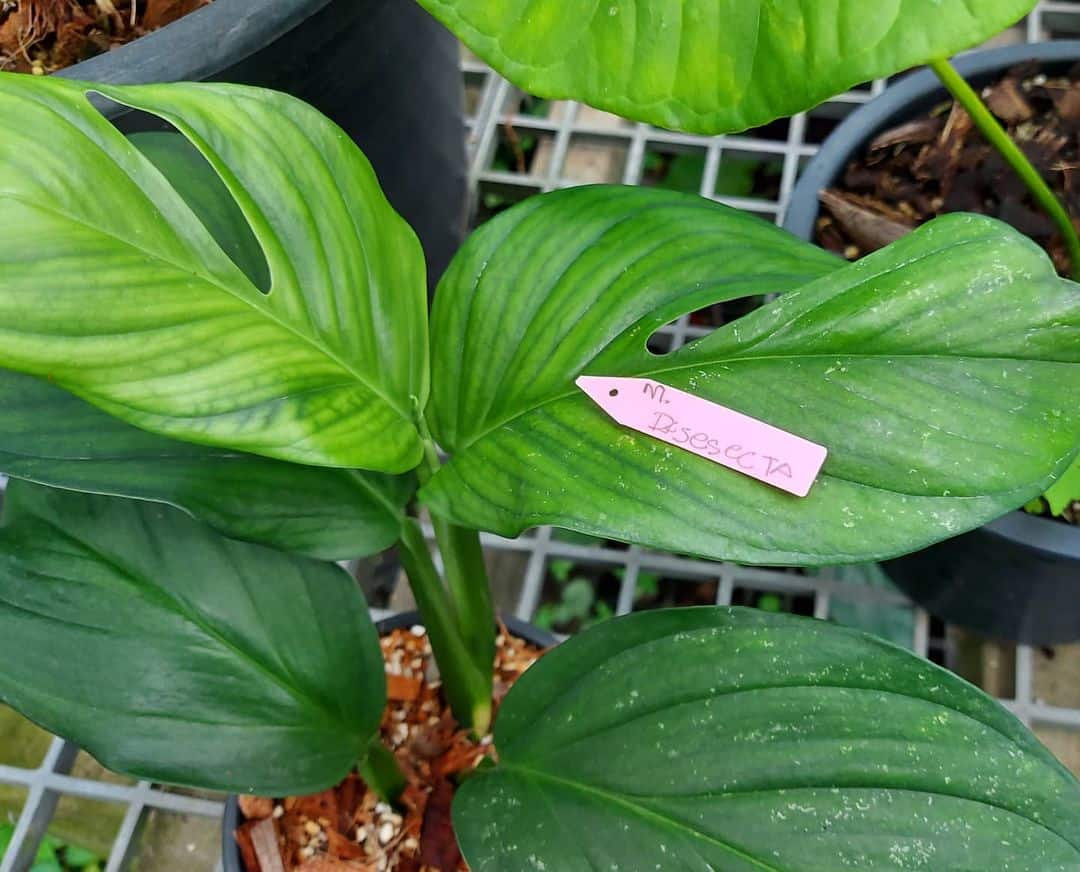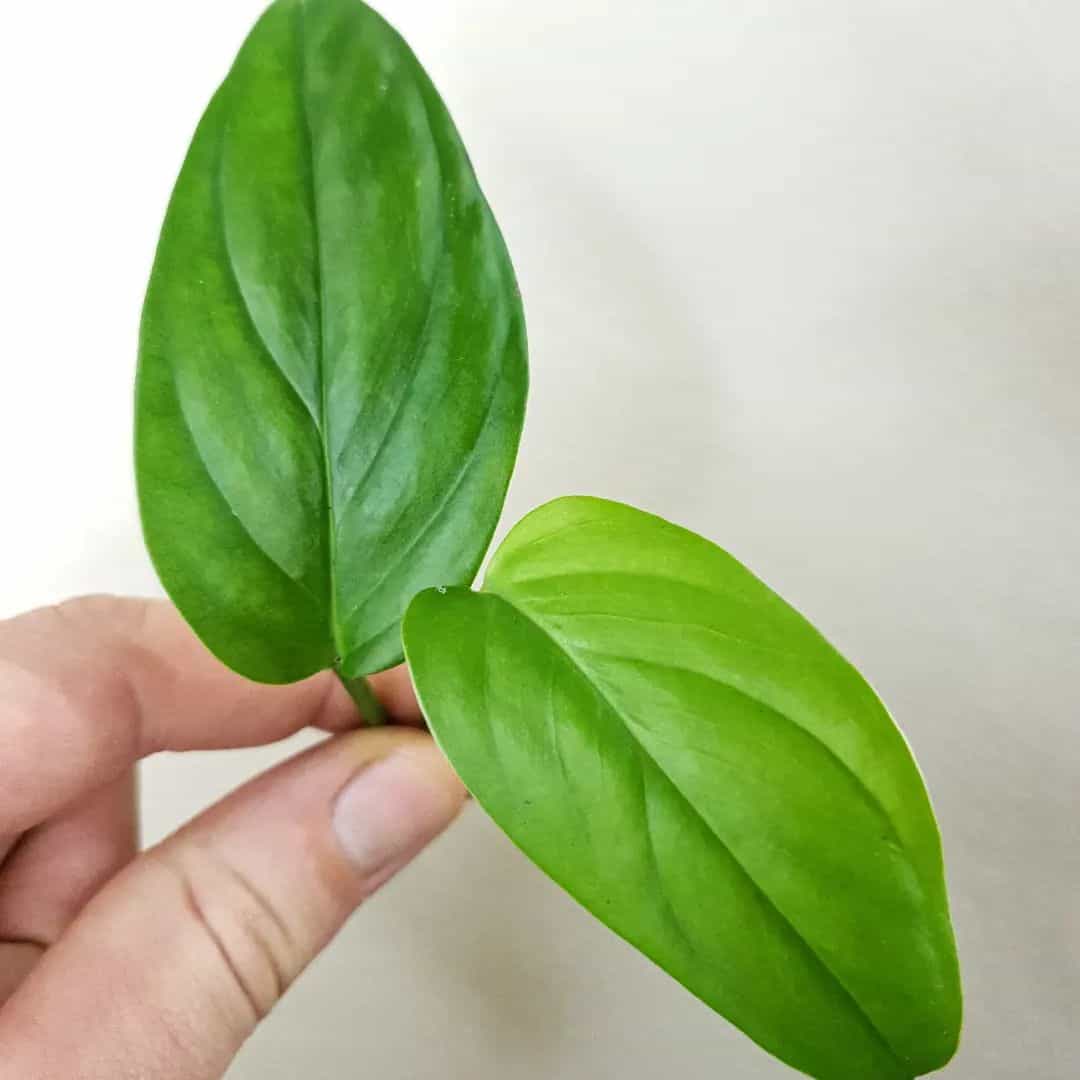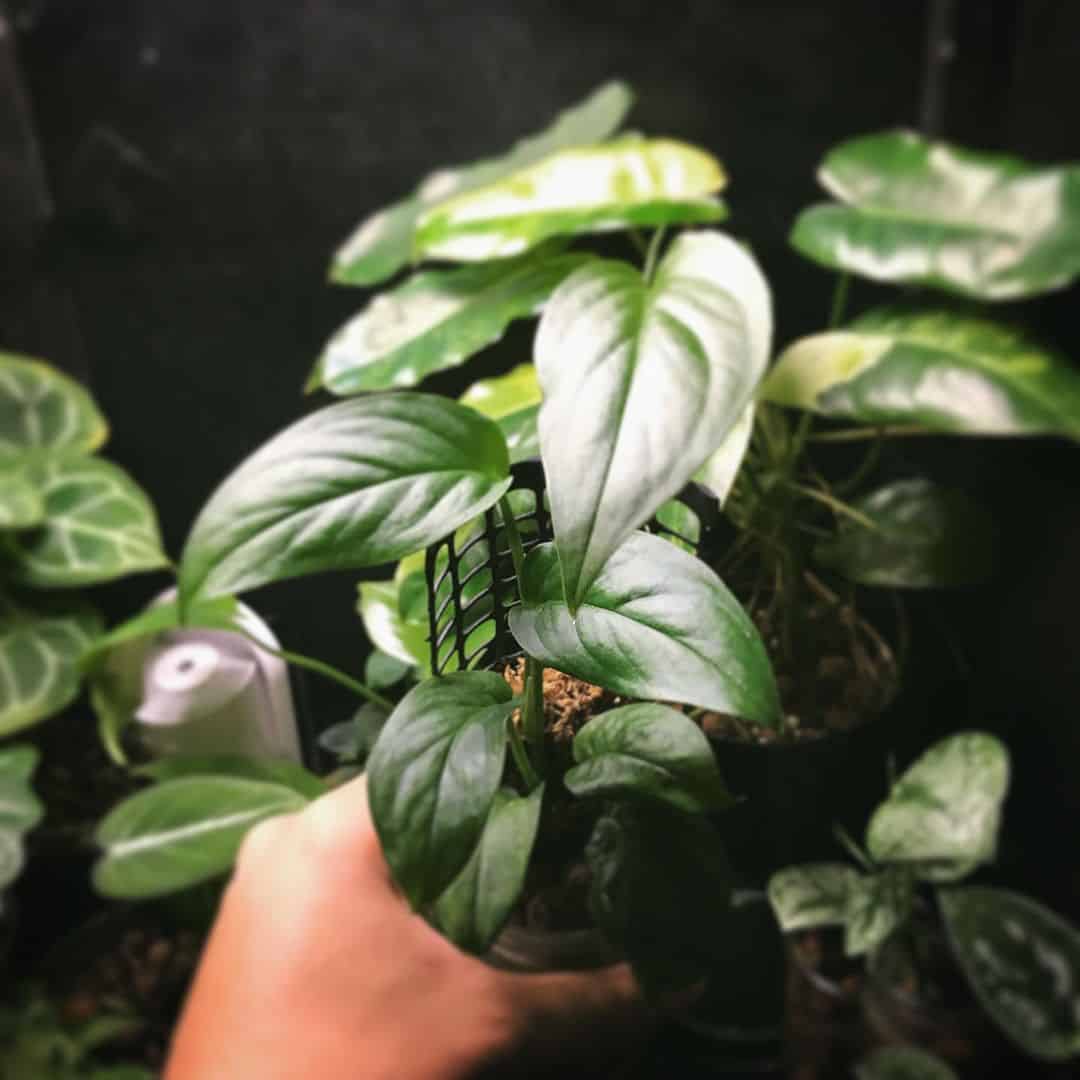The Monstera dissecta is a rare houseplant that belongs to the Monstera genus. This is a tropical climbing plant that produces glossy juvenile leaves that become split (pinnatifid) as the plant matures – hence the name.
It is not uncommon for Monstera leaves to become fenestrated; however, the Monstera dissecta definitely has the prettiest fenestrations.
This fast-growing variety can grow relatively tall – about 32 feet in its natural habitat and about 4 to 8 feet indoors. This tropical beauty is native to Costa Rica, Peru, Guatemala, Colombia, Belize, Northern Brazil, Nicaragua, Honduras, and Panama.
Yet it is not as widely known as many other Monstera varieties. Most rare houseplants are quite pricey, so that might be one of the reasons. However, this plant is definitely worth the money!
Keep reading to find out more about this rarity, and also how to take care of it.
Here’s some basic info to kick things off:
[table id=670 /]
Monstera Dissecta: An Overview
The Monstera dissecta is also known as Tornelia dissecta, Monstera peruviana, and Monstera longipedunculata Matuda. This is an evergreen climbing plant that belongs to the Araceae family.
It’s a rare specimen that is also quite pricey. Still, there are some other Monstera adansonii varieties that are identical to the Monstera dissecta and more affordable. For instance, you can look for a Monstera lechleriana or Monstera spruceana.
We are going to talk about what makes the Monstera dissecta unique, so stick around!
Plant Size
We already mentioned that these plants can grow quite tall in their natural habitat – if they are not disrupted, these plants can even reach up to 32 feet! Sure, they climb along the tall trees in rainforests, but it’s still pretty big for a regular plant.
However, their growth is restricted when cultivated indoors.
They can grow around 4 to 8 feet tall, and you will have to provide them with something to climb on (I usually stake my Monstera plants).
This plant is also known for its large leaves – they are twice as long as they are wide. The leaves can grow from 15 to 28 inches long and around 8 to 15 inches wide.
Growth Habits
As we said earlier, these are climbing plants. It is inevitable that they will need to find something to climb on, so it’s always better to provide them with some type of support – this way, it is a lot easier to control their growth and shape.
These plants are also described as hemiepiphytes – this means that they will spend a part of their life as epiphytes (growing on other plants), and a part of their life on the ground as terrestrial plants.
When they are young, Monsteras will crawl on the ground. As they start climbing, they will anchor themselves to the host using their aerial roots before they grow and develop.
The Monstera dissecta is known for its relatively fast to moderate growth rate, so you better start preparing immediately if you want to get this rare beauty.
Leaves
Young plants have glossy oval-shaped leaves that are wider than they are long. As they mature, the leaves start growing longer. They also develop unique splits or fenestrations (about 4 fenestration per leaf). Mature leaves have a glossy and leathery texture.
Petioles with sheaths and enduring sheath wings are present in both young and mature plants. They have an intense green color on both the surfaces and undersides of the leaves.
Stems & Flowers
Juvenile plants have thinner stems with a light green color. As the plant further develops, the stem turns thicker with a color that varies from green to brownish.
In ideal conditions, Monsteras can produce flowers. In fact, the majority of plants in this genus have a spathe, which is a structure resembling a leaf that guards the spadix rather than the actual flower.
It has a greenish to white color with tiny clusters of berry-like fruit. These berries have dark rectangular seeds. As it matures, the spadix turns light yellow.
How To Take Care Of A Monstera Dissecta
Even though we are talking about a rare Monstera species, these plants have the same requirements as any other tropical plant. They will be happy if you keep them nice and warm, and give them water often.
Let’s look at the plant care guide in more detail.
Soil Requirements
Because Monstera plant roots are sensitive and can’t tolerate too much moisture in the soil, it’s important to use a soil mixture that drains properly. The pH level, fertility, and aeration should also be taken into consideration.
Therefore, the potting soil should be well-draining, fertile, and porous. Peat moss aids in water retention, whereas materials like perlite improve soil drainage.
These components are part of every Monstera soil mix. The ideal pH range is between 5.5 and 7.5.
A fantastic soil mixture can also be created by mixing common potting soil (50%), sphagnum moss (10%), perlite (10%), and orchid bark (30%). In addition, you can also combine soil with 1 part perlite, 1 part sphagnum moss, 1 part horticultural charcoal, and 3 parts orchid bark. However, you can always use a store-bought one that is suitable for Monstera plants.
Light Requirements
Even though these plants can grow relatively tall in their natural habitat, they still grow under even taller trees, so we can conclude that they will thrive in partial shade.
Bright indirect light is ideal for the Monstera dissecta plant. Although some might say that they can grow in low light settings, I wouldn’t recommend that.
For optimal results, put this rare plant close to an east-facing window. It will receive the necessary direct sunlight in the morning and plenty of indirect light in the afternoon. You can also keep it near other windows, just make sure to put sheer curtains up so that the plant is protected from direct sunlight exposure.
If they are exposed to direct sun, those gorgeous leaves will most likely burn. On the contrary, too little light will lead to a leggy Monstera and stunted growth.
You can always invest in a good set of grow lights if you can’t find the ideal location for your Monstera.
Water Requirements
In terms of watering, Monsteras are quite picky. You shouldn’t deprive them of water because they prefer moist soil, but you also shouldn’t give them too much because they can become overwatered (and an overwatered Monstera can be troublesome to fix).
Allowing the top two inches of soil to dry out is the simplest way to keep your Monstera’s watering needs satisfied.
Your plant will need a little bit more watering during the summertime due to higher temperatures, which will dry out the soil quicker. Once the winter approaches, the plant goes dormant, which is why you won’t have to water as much.
Still, don’t neglect your plant entirely because you might end up with an underwatered Monstera plant.
Fertilizer Requirements
As we mentioned earlier, these plants thrive in fertile soil. This is why you should give them some fertilizers during the growing season. I recommend using fertilizers with a high nitrogen content because this nutrient is essential for the development of lush and vibrant leaves.
To avoid burning the leaves, for instance, fertilizer with an NPK ratio of 20 20 20 needs to be diluted. You can apply a liquid fertilizer or you can get a granular one for your Monstera. Besides regular fertilizers, you can add some organic stuff such as coffee grounds, egg shells, and fruit peel.
Avoid overfeeding your dissecta plant as this may cause chemical buildup in the soil, which will make it more challenging for the roots to absorb nutrients and water.
You won’t need to feed your Monstera at all throughout the winter because of dormancy, which is when your plant is not actively growing and won’t need nutrients and water as much.
Humidity Requirements
Since we are talking about a plant that originates from tropical regions, you should know that it is used to growing in higher humidity. The Monstera dissecta thrives in humidity levels of around 65% or above.
Most households have lower humidity levels, which is why you will need to find a way to boost the humidity. Thankfully, there are a few techniques for raising humidity that have a good chance of working. A homemade pebble tray or a humidifier, for instance, are two efficient options.
You can also mist your plant regularly if you don’t want to spend money on a humidifier. In addition, you can also put your plant in a kitchen or bathroom since they have higher humidity levels.
Lastly, placing your houseplants close together to create a microclimate is another effective approach to increasing humidity. You can combine your other Monsters such as the Monstera dubia or Monstera acacoyaguensis.
Temperature Requirements
Monstera dissecta plants prefer temperatures between 60 and 80 degrees Fahrenheit. These Monsteras can withstand temperatures as low as 50 degrees Fahrenheit.
They’re not frost-hardy, and colder weather could cause some serious damage. Keep your Monstera plants away from heaters and air conditioners because they can’t deal with cold drafts and temperatures that are too hot. Sudden temperature changes can also damage this rare Monstera.
Pruning
Regular pruning is not required for the Monstera species. Pruning won’t affect the growth of your plant, but it will make it look nice and tidy.
The best course of action is to remove any Monstera leaves that are damaged or discolored. When pruning, don’t remove more than ¼ of the Monstera leaves at once. The best time to prune these plants is in spring.
Always use clean pruning shears to avoid spreading infections.
Repotting
Since this is a fast-growing plant, you will have to repot it every other season. If you notice that your plant has stopped growing or there are roots coming out of the drainage holes, it is time for repotting.
You should repot the plant at the beginning of the growing season so that they have plenty of time to adapt during the rest of the season.
Prepare a fresh pot for your Monstera, a new soil mixture, and some clean cutting equipment. It shouldn’t be much bigger than the current pot in terms of size; 2 inches larger should do.
Be very careful when taking the plant out of its current pot – tilt the pot to one side and give it a light tap to let the plant slide out.
The next step is to remove as much soil from the roots as you can. Additionally, now is a great time to check the plant’s roots for any infections. If they are diseased, you must remove them with sanitized shears.
After filling one-third of the container with new soil, place your plant in the center of it. After watering the plant and adding more soil, your Monstera is now adapting to its new home.
Propagation
Monstera plants are relatively easy to propagate. The best propagation method would be by using stem cuttings. You must first check your plant to make sure it is in perfect health before proceeding.
If so, then prepare your tools and let’s dive in!
Water Propagation
1. Select a healthy stem for division. Only stem cuttings with an attached leaf node can successfully grow into new stems.
2. Using sharp clean scissors, cut the Monstera about half an inch below the node.
3. Put the stem cutting in clean water. Keep in mind that at least one Monstera node needs to be submerged.
4. Select the most suitable area for the cutting. If the cutting receives enough light, it will develop a strong root system. Don’t expose it to direct sunlight as they are fragile.
5. If the water isn’t fresh, the cutting may quickly decay. Refresh the water every three days to prevent this.
6. You can plant the Monstera cutting into the soil once the roots are a few inches long.
Soil Propagation
1. Take the stem cutting in the same manner as described above.
2. Create a hole in the center of the nursery pot and add some soil mixture appropriate for your plant.
3. Plant the cutting in the soil. If you see that it requires support, you can stake it.
4. It’s essential to set the cutting in a room with high humidity while employing this method. Spraying it daily with water or sealing it in a plastic bag will keep your cutting moist at all times.
5. Once more, for the cutting to produce new growth, there must be plenty of bright indirect light.
6. If you gently pull on the cutting and it resists, this indicates that it has formed a root system. Keep on with regular plant care before transplanting it to a new container.
Monstera Dissecta: Common Issues
This is a pricey and rare plant that is still prone to certain issues such as pest infestations and plant diseases. I would suggest you do everything in your power to protect this plant.
The best preventative measure is to keep your plant healthy – inadequate plant care weakens the plant, which makes it more prone to pests and diseases.
Let’s take a closer look.
Pest Infestation
Scale and spider mites are the two pests that cause the most Monstera problems. Check the undersides of the leaves if you see any webbing because this is where spider mites usually colonize.
Spider mites can be removed with a cotton swab dipped in alcohol. This only works when there aren’t a lot of them, however. Neem oil is generally recommended by growers if you have a scale or spider mite problem. Spray neem oil liberally on the entire surface óf the leaves and stems.
In the end, you can always try pesticides or insecticides.
Plant Disease
If you are familiar with Monstera plants, you are probably also familiar with Monstera root rot. Every indoor plant is vulnerable to overwatering, which frequently results in root rot.
Soggy soil, a foul odor, stunted growth, and yellow foliage are the disease’s most typical symptoms. If the plant is not treated immediately, it may result in deterioration.
Repot the plant, trim off any mushy and decaying roots, and also apply fungicide to the root system. Use fresh soil and a new pot that is sterile and not contaminated.
To Sum Up
The Monstera dissecta is a truly unique plant that’s totally worth buying. Even though it might be pricey, it is still considered as one of the best plants that you can grow indoors.
It is ideal for homes and gardens with a lot of empty space since these plants can grow tall and wide.
Luckily, the plant care guide is almost the same as for any other Monstera variety, so if you already own a healthy Monstera, you shouldn’t be worried about this plant either!
That’s all, folks. I hope this article was helpful.
Until next time!

